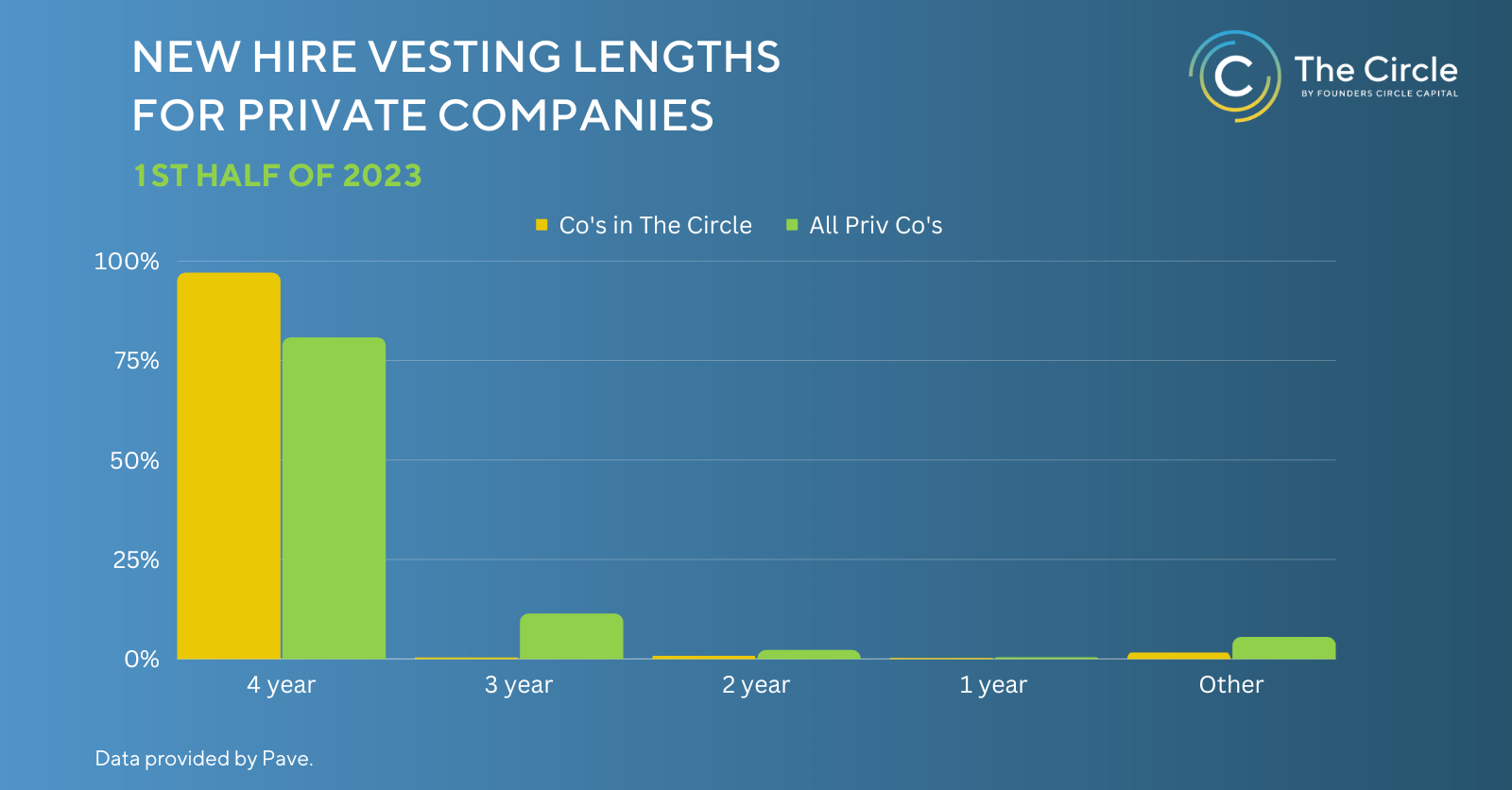Trending
4 Considerations To Craft Your Company’s Equity Strategy
/in Talent, Featured on Home, Equity & Compensation, Trending, I Need to Retain my Top Performers, Developing Your Team, Secondary Liquidity/by Matt McCueAdvancing Your Influence: Strategies for CFOs
/in Leadership & Vision, CFO Leadership, Developing Your Team, Featured on Home, Trending, Talent/by Matt McCueHow People Leaders Can Invest In Their Own Growth
/in Featured on Home, Trending, Talent, I Need to Retain my Top Performers, Developing Your Team, Leadership & Vision/by Matt McCueShare this entry

Architecting Equity
Considerations for Equity Structure, Refresh Grants, & Employee Communication
Granting and managing equity at late stage private companies is a delicate balance between aligning employees with the long-term growth of the business, managing their expectations, minimizing share dilution, and navigating the impacts of market volatility. There are several levers at the disposal of finance and people leaders, from the mix and structure of awards to vesting schedules and refresh strategies, with effective communication being the linchpin for equity success.
We recently convened 70+ executives in The Circle to share how they’re architecting their equity strategy amidst macroeconomic uncertainty and learn some tactics from those that have a lot of experience and scar tissue on the topic:
- Greg Arnold – Managing Director & Compensation Consultant, Semler Brossy
- Matthew Johnson – Partner & Compensation Lawyer, Sidley Austin LLP
- Morgan Melo Barrett – Strategic Initiatives, Pave
- Tracy Knox – former CFO, Rover
- Jovana Teodorovic – VP of People & Culture, Rover
- Tim Yarbrough – CFO, ZipRecruiter
- John Toth – former CFO, BARK
Exploring Beyond the Traditional Vesting Model
The 4-year vesting schedule has been the standard for new hire grants at private companies. However, equity benchmarking data from Pave revealed that more companies are experimenting with 3- and even 2-year vesting periods. Greg Arnold explained that shortened vesting schedules can potentially help companies manage dilution and expenses during market volatility and are also more common for public companies.

A growing number of private companies are also vesting equity quarterly rather than monthly after the 1-year cliff, which could reflect a shift from options to RSUs. It’s worth noting shorter vesting frequency can create tax challenges for employees during market volatility if the share price changes dramatically when it comes time for employees to sell.
“Equity is full of nuance. Unlike cash, there are so many levers you can pull from vesting length to refresh strategies to cliffs and everything in between.”
– Morgan Melo Barrett, Strategic Initiatives at Pave
The Role of Equity in an Uncertain Market
While equity is meant to be a long-term employee incentive, it is vulnerable to the impacts of short-term market volatility. In fact, a poll of leaders in The Circle found that 64% have experienced a change in their 409A valuation in the last 12 months, impacting their equity value. Preserving the incentive value of equity is always essential, and a steep valuation decline could require companies to consider repricing underwater options or granting additional equity to employees. But it’s important to maintain a long-term view when making market-driven equity decisions.
“Market uncertainty will shift your employees’ concern to their immediate take-home pay, but equity is still the best way to align their long-term incentives. Instead of giving out excess equity at a compressed valuation, leaders can manage dilution by considering smaller grants with shorter vesting terms to incentivize and retain top employees.”
-Tim Yarbrough, CFO of ZipRecruiter
One way to keep long-term equity dilution at bay is to set a limit on annual equity burn rate that stays within or around the 4-6% range (unless you are ramping up to go public, when a higher burn rate may be necessary to retain key talent).
Most companies in the conversation currently grant equity to all of their employees, but it’s not uncommon for private companies to evolve their approach to who receives equity and when. If you’re planning to make any significant changes to your equity grant strategy, be sure to create clarity around your “why” and even consider putting that into an equity mission statement:
“We found a mission statement for our equity incentive program helpful. While private, our mission statement was: To drive equity ownership deeply and broadly into the organization in order to (1) promote employee ownership and entrepreneurial behavior and (2) provide employees with the opportunity for a life-changing financial event. Then, when we went public, our equity program mission became aligned primarily with management compensation and retention, consistent with traditional proxy disclosure.”
– John Toth, former CFO of BARK
Structuring Refresh Grants Wisely
Refresh grants are a vital tool for retaining employees and are also a framework for how you think about rewarding performance:
“Refresh grants are an important tool for retaining talent. But before operationalizing a strategy, you need to define philosophy for how your company measures different roles and employee performance in addition to understanding market conditions.”
– Greg Arnold, Managing Director & Compensation Consultant, Semler Brossy
There are different ways to structure refresh grants, from a straightforward annual grant to performance-based grants or the popular “boxcar” method – where the follow-on grant doesn’t start vesting until the initial grant fully vests. There’s no single correct approach, but remember that the more vesting periods and grant types you add into the mix, the more challenging it will be to administer the strategy. Our experts agreed that the simplest approach is often the best one:
“You want a refresh grant strategy that’s clear, formulaic, and easy to follow for employees. It needs to be scalable from 40 employees to a thousand employees.”
– Tracy Knox, former CFO of Rover
Operationalizing refresh grants will become increasingly challenging as your company scales, which is why our experts recommended implementing the support of a third-party consultant or system. The last thing you want is to miss an employee’s refresh grant date or deal with the administrative headache of manually reviewing hundreds or thousands of vesting dates for your employees. When choosing the right software, John repeated the wisdom of another Circle member: do your diligence and pick once to avoid changing systems later. Make sure it scales for volume and complexity. Trying to migrate years of ownership data from one system to another, with supporting documentation, is prone to errors that can become litigious.
From a legal perspective, Matthew Johnson offered two critical pitfalls to avoid when setting up a refresh grant strategy:
- Using an outdated 409A valuation – if any material events have occurred since the last valuation or if it is more than one year old, the company should obtain a new one.
- Rule 701 compliance – Rule 701 limits total equity grants for private companies and requires distributing financial and disclosure statements if granting more than $10 million of equity in a rolling 12-month period.
Communicating Equity Value to Employees
A conversation about equity strategy wouldn’t be complete without discussing employee communication. “When it comes to equity, communication is what wins,” said John. Speak with counsel to be clear on “what you can and can’t/shouldn’t say,” remind them you cannot and are not giving financial advice; but remember this is an employee benefit and motivation tool so their understanding of it is critical to its effectiveness.
Our experts agreed that an open and transparent communication plan is always essential, particularly during market volatility. Leaders typically want to keep conversations about equity close to the chest in the early days of the business; however, Jovana Teodorovic reminded everyone that equity is a valuable message about the health and resilience of your business.
“Equity is always an opportunity to create a dialogue with employees and to build and maintain their trust. Employees want to hear from the CEO and other leaders about what’s happening in the market and how it relates to business performance. That’s when they feel the most invested in the company.”
-Jovana Teodorovic, VP of People & Culture at Rover
It’s also important to dedicate resources towards ensuring employees understand the mechanics of their equity and total rewards. Just be sure to avoid giving explicit financial or tax advice, cautioned Matthew.
The Takeaway:
As market volatility continues in 2023, leaders should use this opportunity to reassess their equity strategy, paying particular attention to award structure, refresh grants, and employee communication. Don’t be afraid to experiment, provided you can maintain a long-term focus and avoid excess dilution.
Related Blog Posts

4 Considerations To Craft Your Company’s Equity Strategy

Advancing Your Influence: Strategies for CFOs




